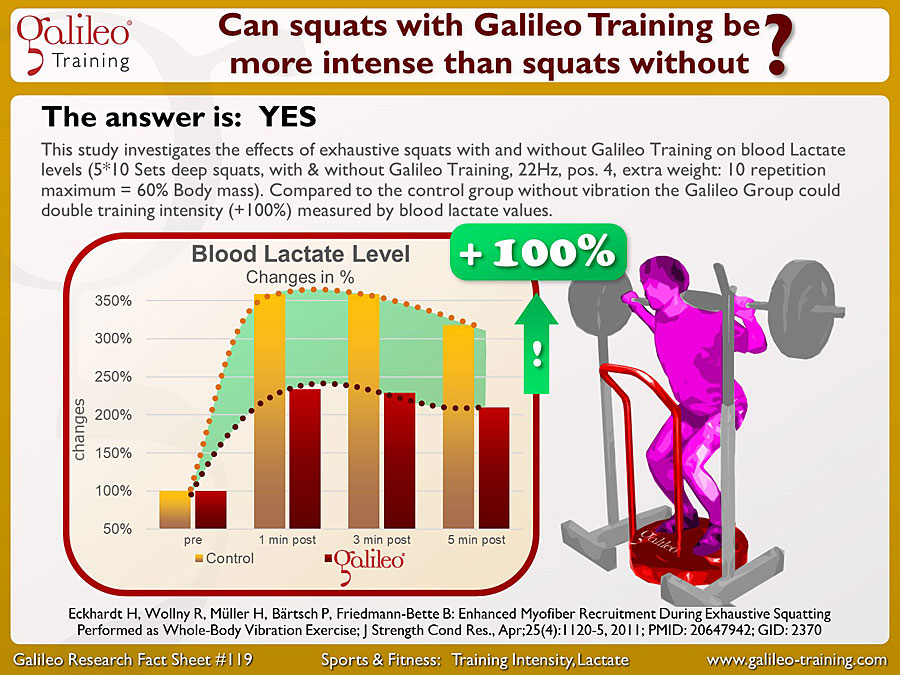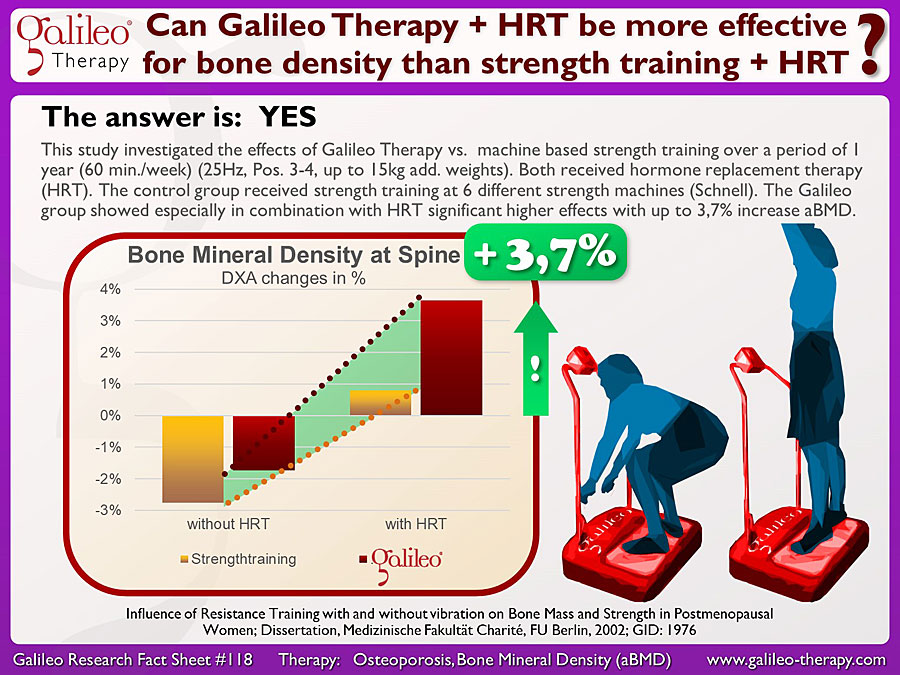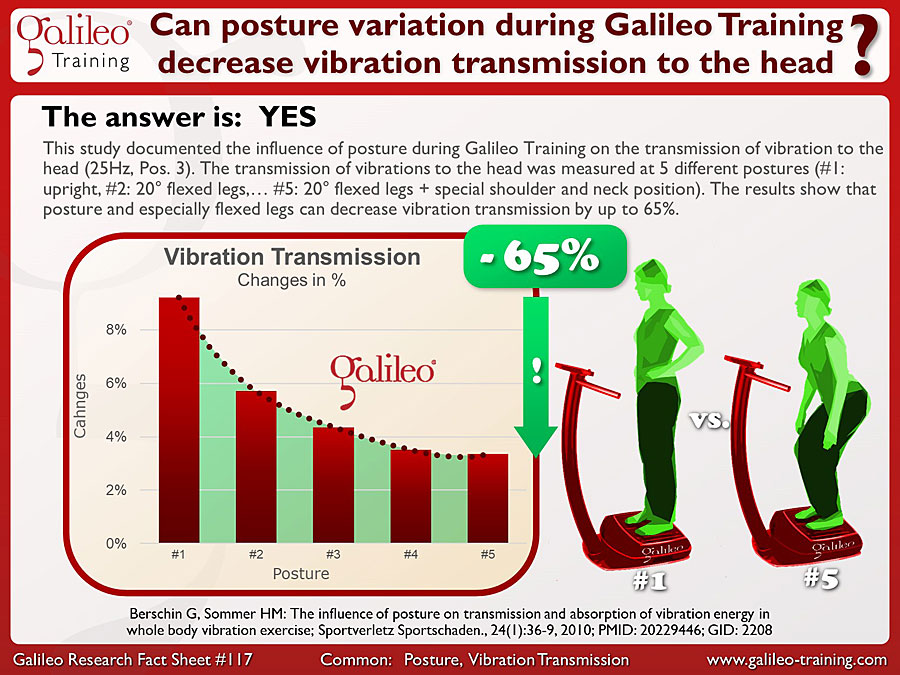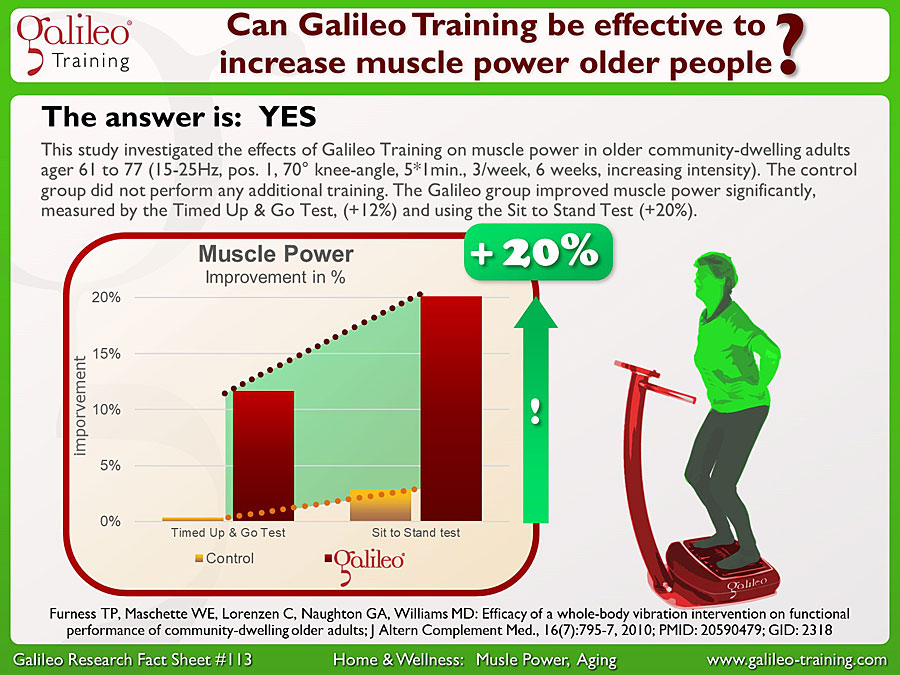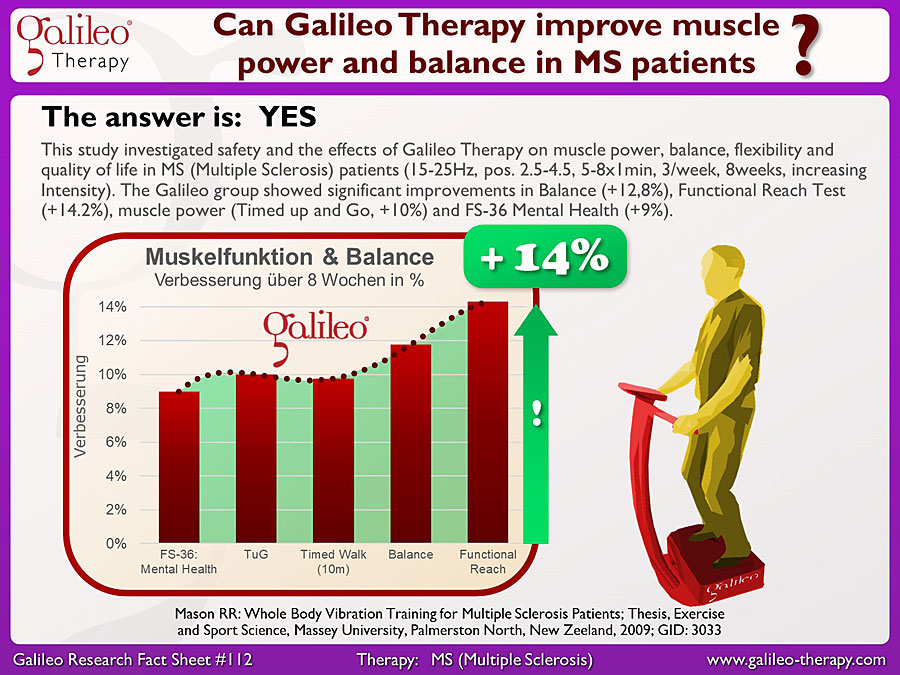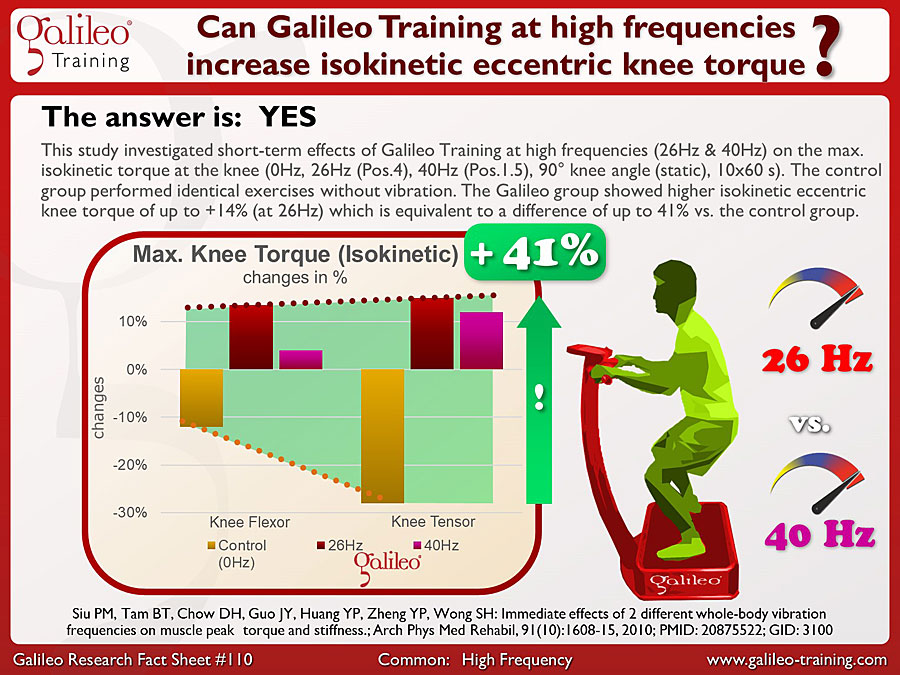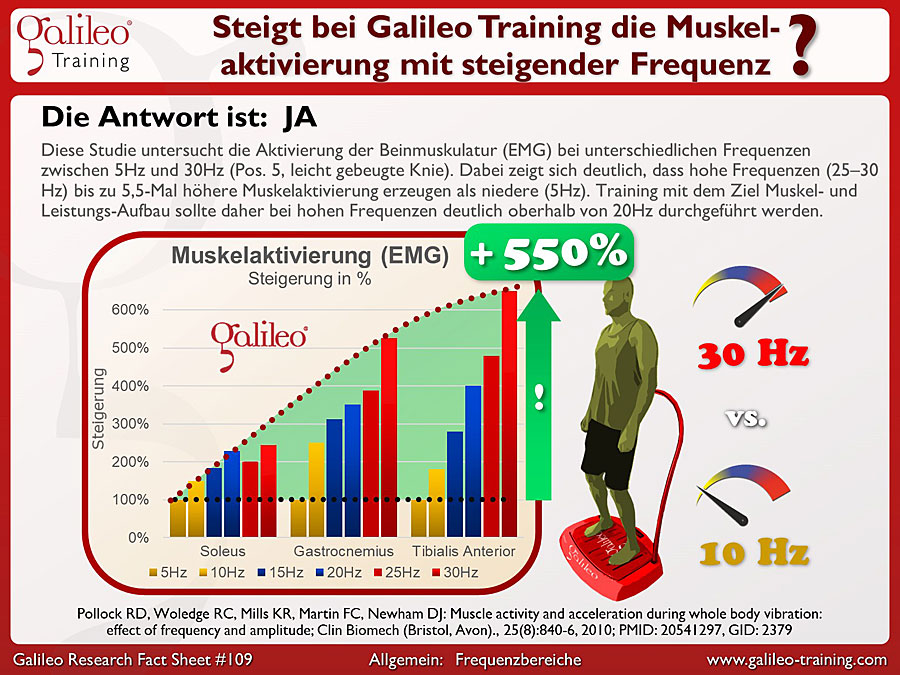Tag Archives: MechanoStimulation
This study investigates the effects of exhaustive squats with and without Galileo Training on blood Lactate levels (5*10 Sets deep squats, with & without Galileo Training, 22Hz, pos. 4, extra weight: 10 repetition maximum = 60% Body mass). Compared to the control group without vibration the Galileo Group could double training intensity (+100%) measured by blood lactate values...
Galileo Research Facts No. 118: Can Galileo Therapy + HRT be more effective for bone density than strength training + HRT?
This study investigated the effects of Galileo Therapy vs. machine based strength training over a period of 1 year (60 min./week) (25Hz, Pos. 3-4, up to 15kg add. weights). Both received hormone replacement therapy (HRT). The control group received strength training at 6 different strength machines (Schnell). The Galileo group showed especially in combination with HRT significant higher effects with up to 3,7% increase aBMD...
Galileo Research Facts No. 117: Can posture variation during Galileo Training decrease vibration transmission to the head?
This study documented the influence of posture during Galileo Training on the transmission of vibration to the head (25Hz, Pos. 3). The transmission of vibrations to the head was measured at 5 different postures (#1: upright, #2: 20° flexed legs,… #5: 20° flexed legs + special shoulder and neck position). The results show that posture and especially flexed legs can decrease vibration transmission by up to 65%...
Galileo Research Facts No. 116: Can high frequency Galileo Therapy improve blood-flow in spinal cord injury?
This study investigated the effects of Galileo Therapy on blood-flow in spinal cord injury (SCI, ASIA A) patients. They received Galileo Therapy on a Galileo Delta tilt-table (45° tilt, 10-30Hz, pos. 2.5, 60° flexed knees, 3 min., then 2 min. test, blood-flow was measured using ultrasound Doppler). The blood flow improved significantly with increasing frequency and time by up to 54% compared to rest (also at 45° tilt)...
Galileo Research Facts No. 114: Can Galileo Therapy improve sensory perception in Diabetes Type 2 patients?
This study investigated the effects of Galileo Therapy on the sensory perception (perception thresholds) in Diabetes Type 2 patients with diagnosed peripheral neuropathy (12Hz, pos. 1-3, 30° bent knees, 11 min., 3/week, 6 weeks). The control group received identical exercises without vibration. Compared to the control group the Galileo group showed a significant improvement of sensory perception by up to 21% (vibration)...
Galileo Research Facts No. 113: Can Galileo Training be effective to increase muscle power older people?
This study investigated the effects of Galileo Training on muscle power in older community-dwelling adults ager 61 to 77 (15-25Hz, pos. 1, 70° knee-angle, 5*1min., 3/week, 6 weeks, increasing intensity). The control group did not perform any additional training. The Galileo group improved muscle power significantly, measured by the Timed Up & Go Test, (+12%) and using the Sit to Stand Test (+20%)...
Galileo Research Facts No. 112: Can Galileo Therapy improve muscle power and balance in MS patients?
This study investigated safety and the effects of Galileo Therapy on muscle power, balance, flexibility and quality of life in MS (Multiple Sclerosis) patients (15-25Hz, pos. 2.5-4.5, 5-8x1min, 3/week, 8weeks, increasing Intensity). The Galileo group showed significant improvements in Balance (+12,8%), Functional Reach Test (+14.2%), muscle power (Timed up and Go, +10%) and FS-36 Mental Health (+9%)...
Galileo Research Facts No. 111 Does muscle activation during Galileo Training increase with amplitude?
This study tested muscle activation (EMG) of different muscles of the leg at different amplitudes and frequen-cies (5..30Hz) (pos. 2.5 vs. pos. 5, slightly flexed legs). It showed that higher amplitudes (pos. 5) can increase muscle activation by up to 2.75 times compared to low amplitudes (pos. 2.5). Therefore the amplitude is an easy way to adjust the intensity of Galileo Training. (On Galileo the position is equivalent to amplitude in mm)...
Galileo Research Facts No. 110: Can Galileo Training at high frequencies increase isokinetic eccentric knee torque?
This study investigated short-term effects of Galileo Training at high frequencies (26Hz & 40Hz) on the max. isokinetic torque at the knee (0Hz, 26Hz (Pos.4), 40Hz (Pos.1.5), 90° knee angle (static), 10x60 s). The control group performed identical exercises without vibration. The Galileo group showed higher isokinetic eccentric knee torque of up to +14% (at 26Hz) which is equivalent to a difference of up to 41% vs. the control group...
Galileo Research Facts No. 109: Can high frequencies increase muscle activation during Galileo Training?
This study tested muscle activation (EMG) of different muscles of the leg at different frequencies between 5 and 30Hz (pos. 5, slightly flexed legs). It showed that high frequencies (25-30Hz) can increase muscle activation by up to 5.5 times compared to low frequencies at 5Hz. Therefore Galileo Training targeting muscle hypertrophy and muscle power should be using high frequencies above 20 Hz to increase muscle activation...
